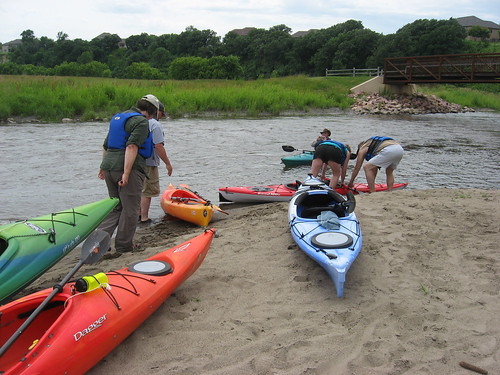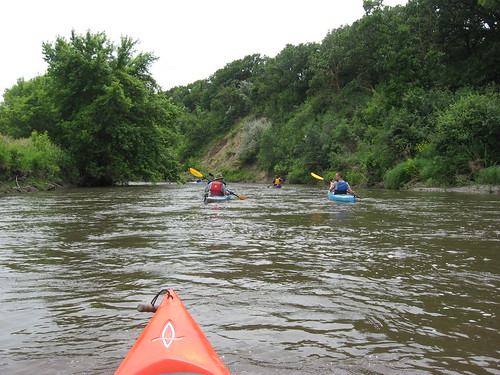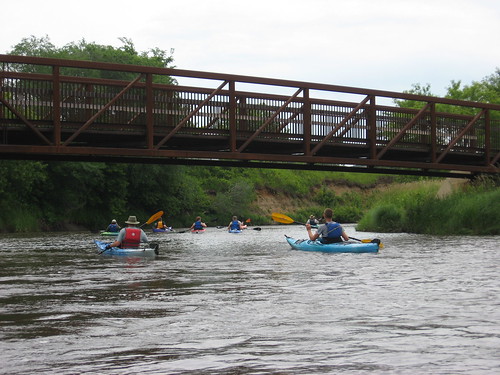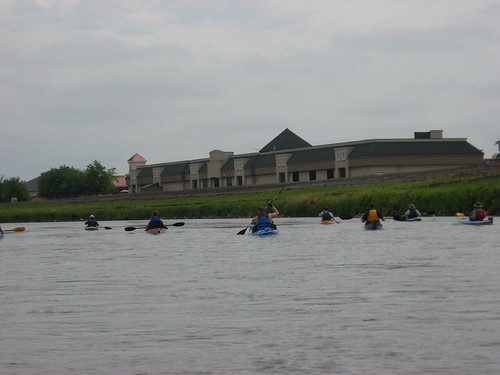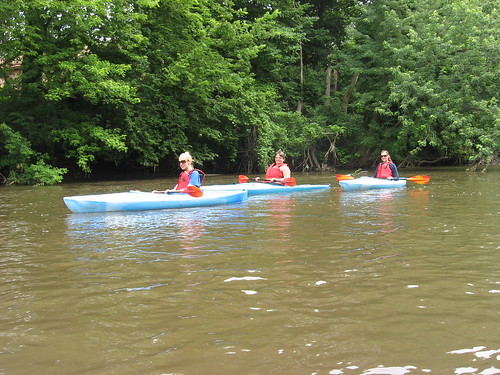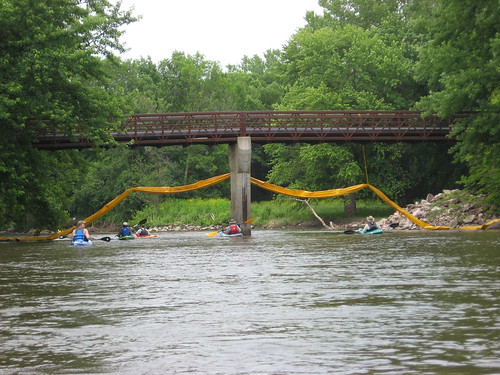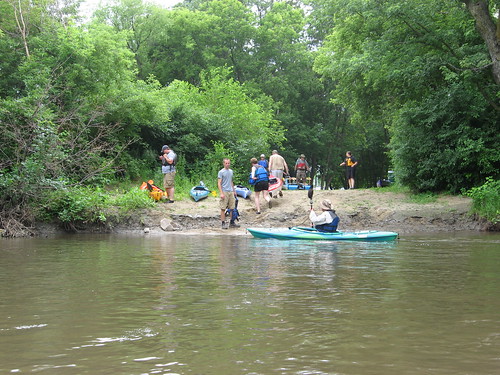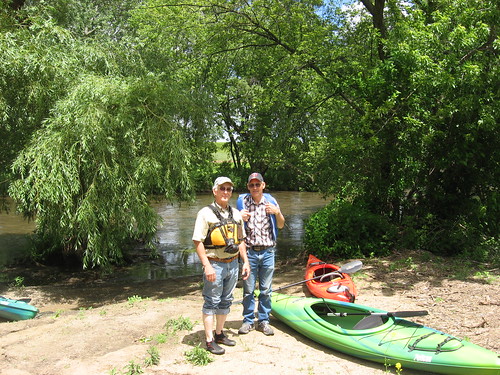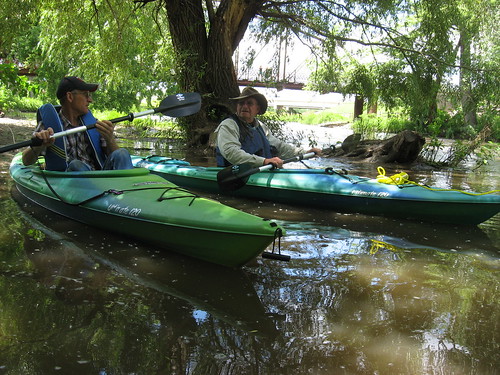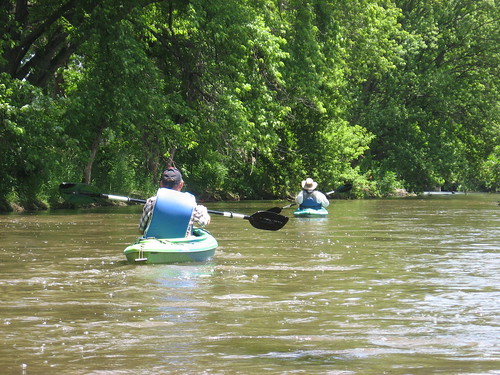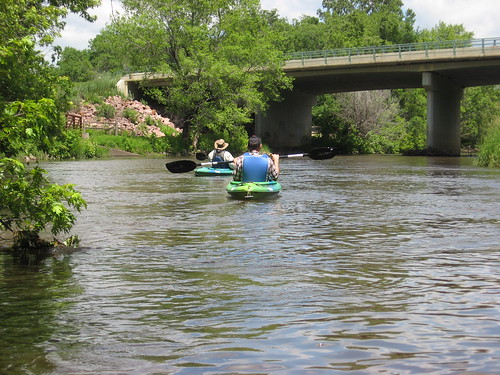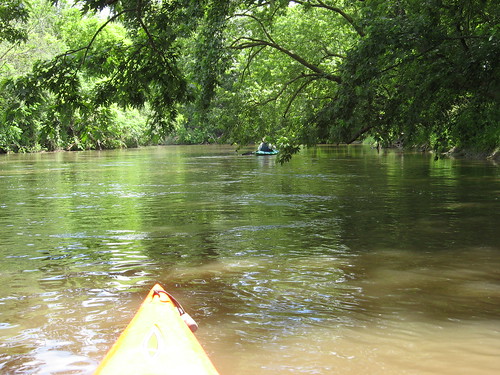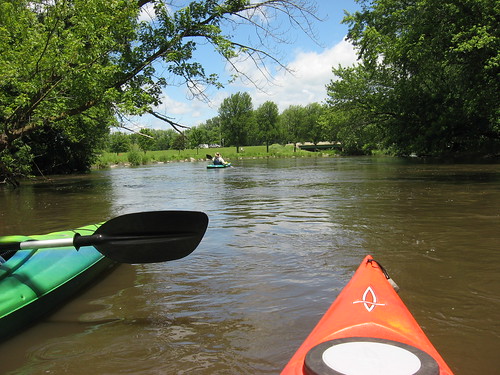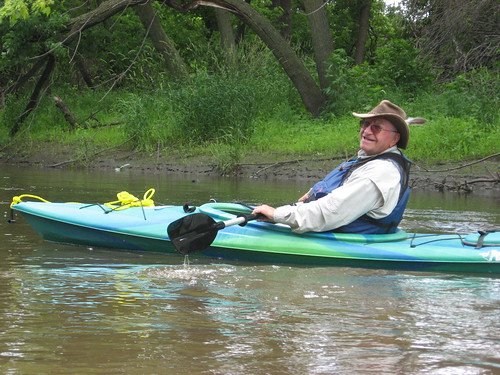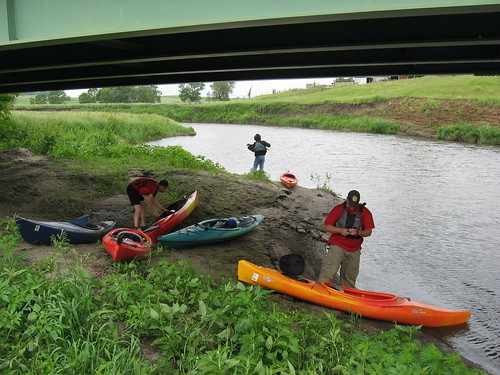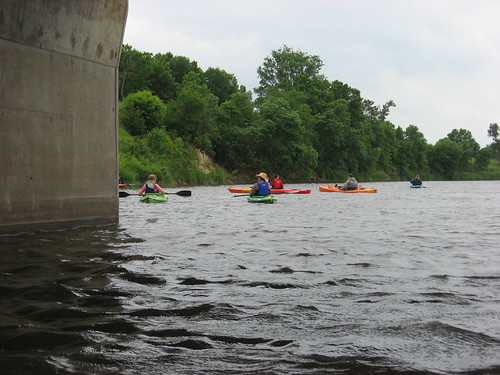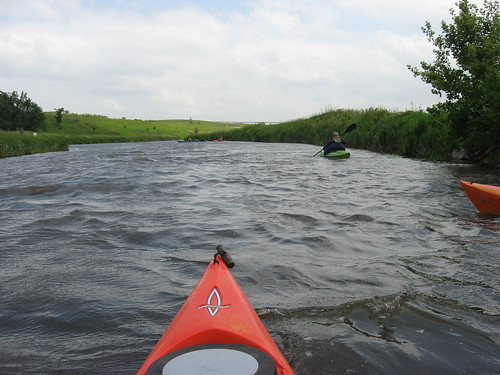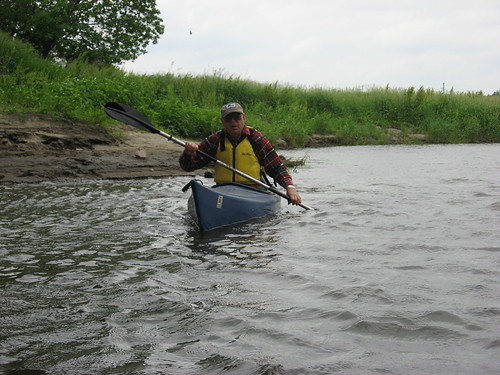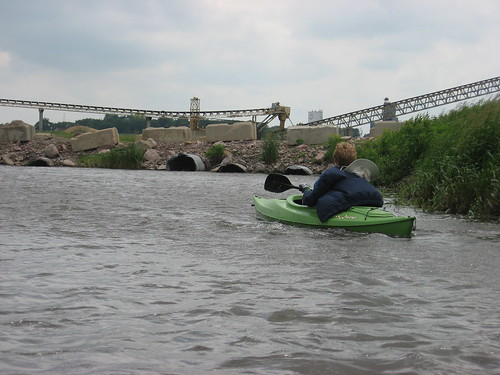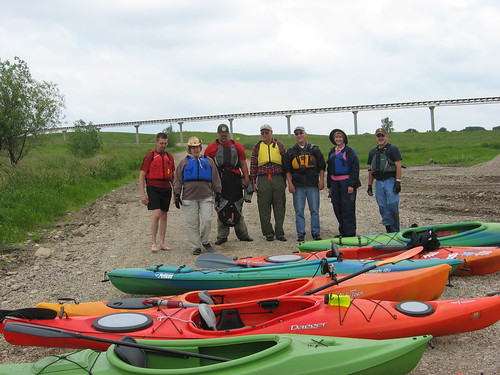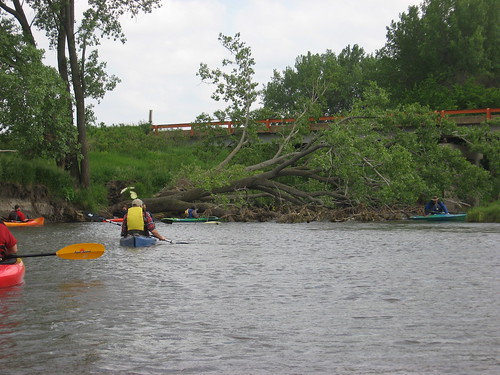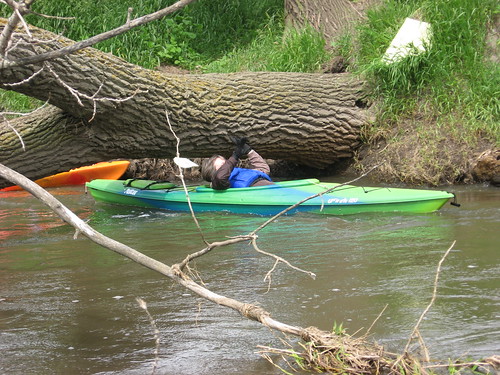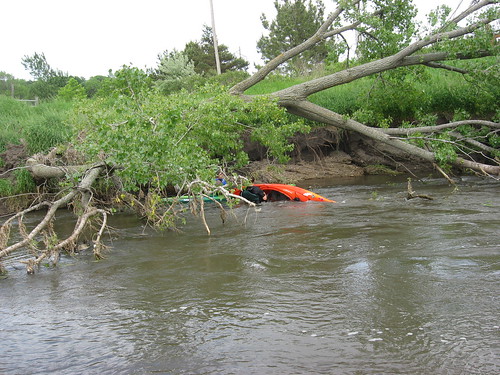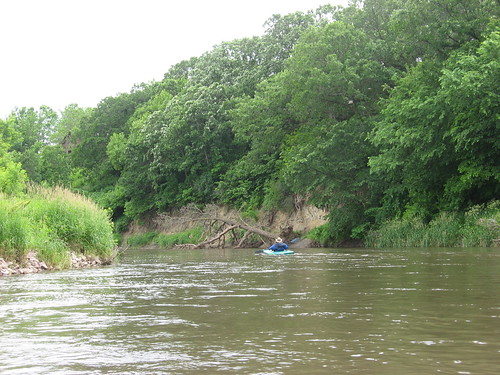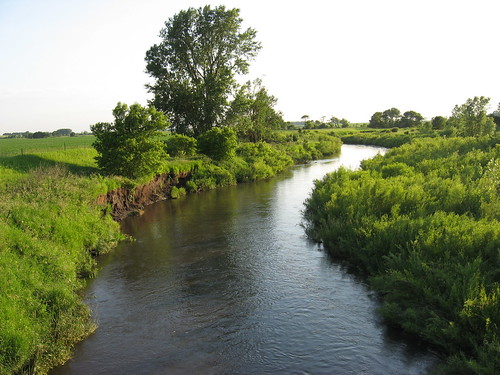
On Monday afternoon, David Finck called me to ask if I was interested in going on a cruise down Kanaranzi Creek in southwestern Minnesota. Dave had made arrangements for this cruise with Craig, a paddler in Worthington, to explore this stream. With my newfound resolve to embrace spontaneity, I accepted the invitation, and we made the trip yesterday evening.
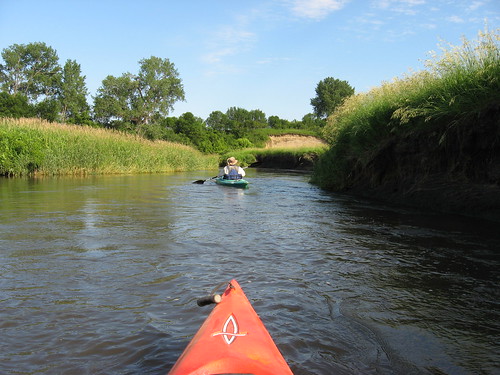
Kanaranzi Creek is a stream that originates near Lismore, Minnesota, and winds its way southwest to a confluence with the Rock River just north of Rock Rapids, Iowa. We met Craig at a gas station on the edge of Adrian, Minnesota, and headed for the put-in off a bridge just west of town. Craig had traveled down the Kanaranzi a number of times, but neither Dave nor I had done so, and he became the guide for the cruise.
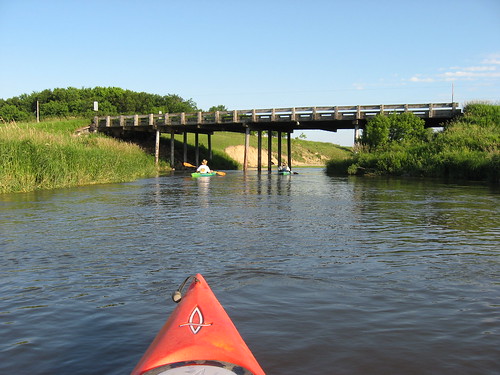
It was about 5:30 p.m. on a sunny afternoon with little wind and a temperature of 78 degrees as we arrived at the spot Craig chose for the put-in, a bridge a couple of miles southwest of Adrian. We shuttled vehicles between the put-in and a take-out site located two bridges downstream. Getting down from the road to the creek required hauling our three kayaks down a steep bank and tall grass to a muddy bank and a fast current. We quickly launched ourselves out into the fast current and a creek depth of about four feet.

Our cruise yesterday was about six miles and passed through a varied landscape of occasional high cut-banks, steep grassy banks along both sides, a width that seemed to vary from 20 to 40 feet, a fast current, and a depth that ranged from a couple of feet to four or five feet in the channel. Sometimes the creek passed through wooded areas and sometimes through what seemed like pasture land. Occasionally the creek would split around islands in the stream. The creek course was serpentine with many bends and a resulting limited sight line for landscape features ahead.
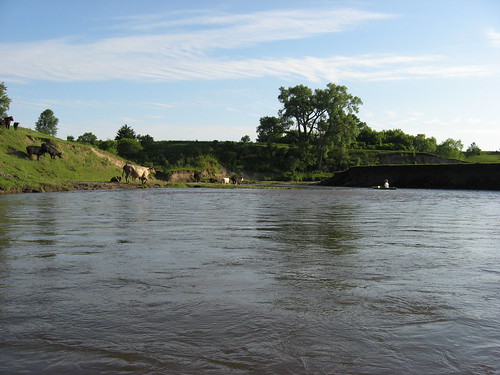
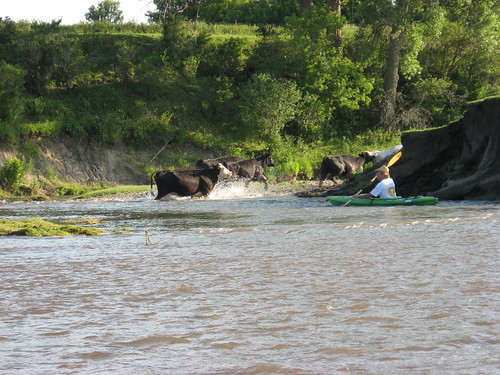
We saw three deer along the way; one was high above on a cut-bank, another was loping along through the grass on the bank, and then there was one leaping through the water just ahead of us. We also came across a herd of cattle that was crossing from one side of the creek to the other and seemed unfazed by kayaks coming down on them. We were nearly on top of some of the cattle as they stopped midstream to check out the intruders in their domain.
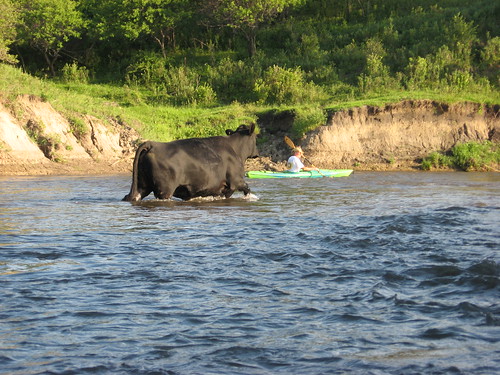
Navigational hazards are magnified on small streams, especially when a swift current is flowing. Trees can be eroded along the bank and fall across the entire stream, creating a strainer that is difficult to either anticipate or avoid. With limited sight lines ahead, a narrow stream, and a fast current, decision time is limited; a wrong decision or hesitation can quickly send a paddler into harm’s way. In addition, paddlers tend to stick close together on narrow and curving streams; otherwise, the boats become separated and it is difficult to pass the word about approaching hazards back and forth.
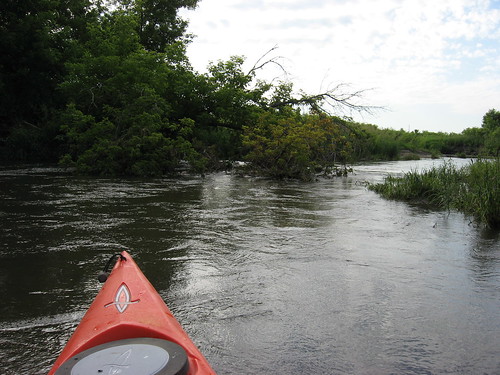
We approached such a strainer about halfway through our passage yesterday. The strainer was not visible until we were almost on it, and Dave was able to shoot through a narrow passage on the left side. The flow of the water in these circumstances tends to increase as the flow is funneled into a limited space. But, Dave made it and suddenly I was upon it. As I approached the slot, the pressure drove my kayak into the strainer and I got stuck in the branches on the edge of the passage. Water began pouring into my kayak, and I knew that I was in a tight spot. Craig was behind me, and the current inhibited his ability to avoid my kayak. He tried to stop and exit the kayak but capsized behind me. Standing in the flow, he gave my kayak a shove to free me, but some of the branches had wrapped around my body. Slipping them off with some difficulty, I was able to move downstream.
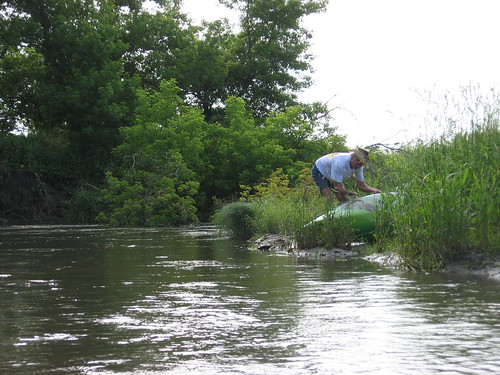
We stopped so that Craig could empty his kayak. Since my pump was in the rear hatch and inaccessible to me, I used a sponge to get the several gallons of water out of my kayak. It was only because Craig gave me a push that I was able to escape capsizing my kayak.
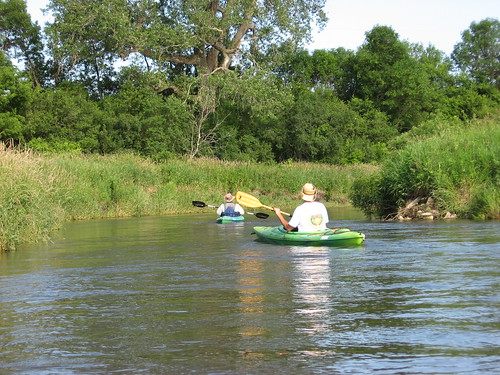
There were sets of riffles to be negotiated every few hundred yards, but these were manageable and we just shot through them. We passed under one electric fence that did not pose any problem.

The next fence across the river was a different story. Sweeping around a bend, suddenly we saw a sagging electric fence line. The center part of the line was in the water, and there was a gap on the right side that we thought that we could get through. Again, on a narrow fast flowing stream, decisions have to be quickly made; there is limited opportunity for discussion or consideration of alternatives. Dave made the first run into the slot on the right side, leaned the wrong way to avoid the fence and capsized. I was right behind him; he was in the water, and I was sweeping toward him. My kayak slipped sideways, and suddenly the water poured into the hull. The kayak filled up with water, but it did not capsize. I was just sitting there in a kayak full of water wondering how I could get out of it without rolling. Craig saw what was happening ahead and decided to head over the sagging center of the line and made it through without incident.
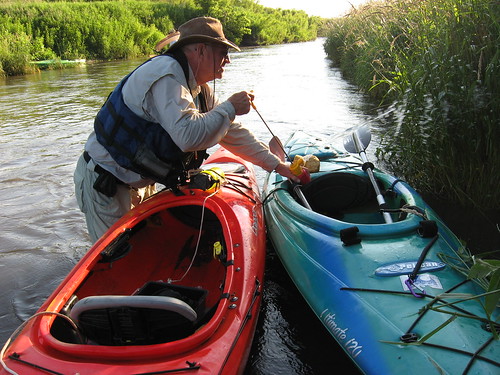
The water at this point was only about knee deep, but the current was especially fast through the gaps in the semi-submerged fence line and the debris that had caught on it. The banks were too deep to land the kayaks. We got my pump out of the rear hatch and drained both our kayaks and then floated them down and over to the other side where we had a better chance of reentering and continuing the trip.
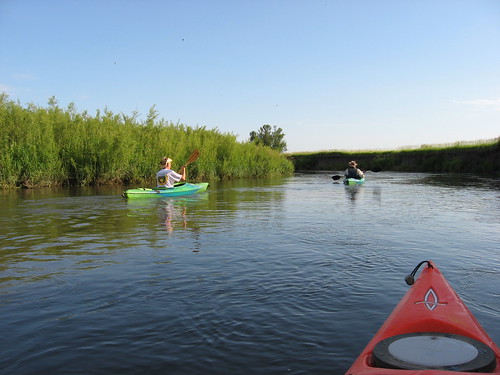
From that point on to the take-out at the second bridge, we had reconciled ourselves to being wet and experiencing mishaps. There were, however, no more incidents, and we arrived at the take-out below the bridge. We exited the kayaks without mishap and dragged our kayaks through the tall grass again and up a very steep embankment to the road.
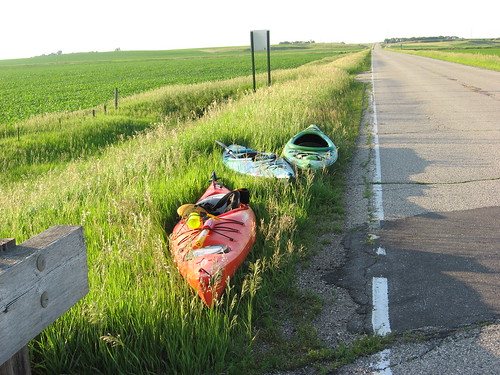
I stood by the kayaks as Dave and Craig left to pick up Dave’s van and the trailer. Our six-mile cruise took us about two hours.

These narrow and twisting creeks that are full and flowing fast offer an interesting ride. Since mistakes are highlighted on such waterways, paddlers are able to hone their skills and ability to keep sharp in reading the river and dealing with unexpected circumstances. At the same time, such experience highlights the need to always be alert, wear a life jacket, and not to paddle alone on moving water. I believe that it is essential that a paddler always anticipate an unplanned incident and be prepared with a water pump, a sponge, and an extra paddle. A person should always wear some type of footwear that can be used to walk on river bottom, along rocky shores, and through brush along the shore.

